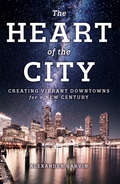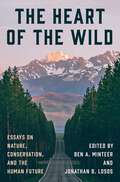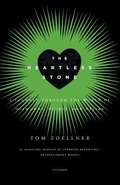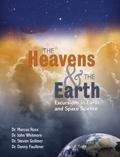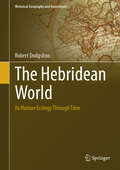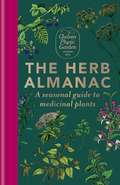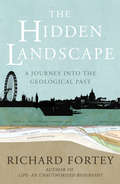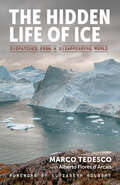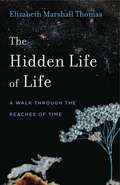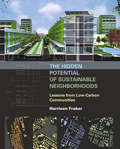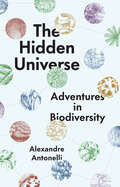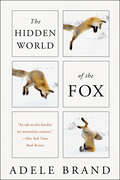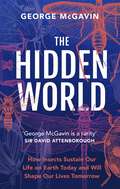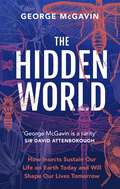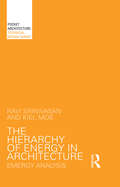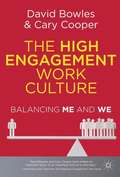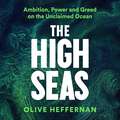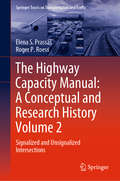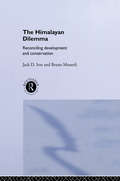- Table View
- List View
The Heart of the City: Creating Vibrant Downtowns for a New Century
by Alexander GarvinDowntowns are more than economic engines: they are repositories of knowledge and culture and generators of new ideas, technology, and ventures. They are the heart of the city that drives its future. If we are to have healthy downtowns, we need to understand what downtown is all about; how and why some American downtowns never stopped thriving (such as San Jose and Houston), some have been in decline for half a century (including Detroit and St. Louis), and still others are resurging after temporary decline (many, including Lower Manhattan and Los Angeles). The downtowns that are prospering are those that more easily adapt to changing needs and lifestyles.In The Heart of the City, distinguished urban planner Alexander Garvin shares lessons on how to plan for a mix of housing, businesses, and attractions; enhance the public realm; improve mobility; and successfully manage downtown services. Garvin opens the book with diagnoses of downtowns across the United States, including the people, businesses, institutions, and public agencies implementing changes. In a review of prescriptions and treatments for any downtown, Garvin shares brief accounts—of both successes and failures—of what individuals with very different objectives have done to change their downtowns. The final chapters look at what is possible for downtowns in the future, closing with suggested national, state, and local legislation to create standard downtown business improvement districts to better manage downtowns.This book will help public officials, civic organizations, downtown business property owners, and people who care about cities learn from successful recent actions in downtowns across the country, and expand opportunities facing their downtown. Garvin provides recommendations for continuing actions to help any downtown thrive, ensuring a prosperous and thrilling future for the 21st-century American city.
The Heart of the Wild: Essays on Nature, Conservation, and the Human Future
by Gary Paul Nabhan Peter H. Raven Joel Berger Harry W. Greene Hal Herzog Susan Clayton Emma Marris Kathleen Dean Moore Thomas Lowe Fleischner Eileen Crist Bill Adams Martha L. Crump Christopher J. Schell Richard Shine Kyle WhyteTimely and provocative reflections on the future of the wild in an increasingly human worldThe Heart of the Wild brings together some of today&’s leading scientists, humanists, and nature writers to offer a thought-provoking meditation on the urgency of learning about and experiencing our wild places in an age of rapidly expanding human impacts.These engaging essays present nuanced and often surprising perspectives on the meaning and value of &“wildness&” amid the realities of the Anthropocene. They consider the trends and forces—from the cultural and conceptual to the ecological and technological—that are transforming our relationship with the natural world and sometimes seem only to be pulling us farther away from wild places and species with each passing day. The contributors make impassioned defenses of naturalism, natural history, and nature education in helping us to rediscover a love for the wild at a time when our connections with it have frayed or been lost altogether.Charting a new path forward in an era of ecological uncertainty, The Heart of the Wild reframes our understanding of nature and our responsibility to learn from and sustain it as the human footprint sinks ever deeper into the landscapes around us.With contributions by Bill Adams, Joel Berger, Susan Clayton, Eileen Crist, Martha L. Crump, Thomas Lowe Fleischner, Harry W. Greene, Hal Herzog, Jonathan B. Losos, Emma Marris, Ben A. Minteer, Kathleen Dean Moore, Gary Paul Nabhan, Peter H. Raven, Christopher J. Schell, Richard Shine, and Kyle Whyte.
The Heartless Stone: A Journey Through the World of Diamonds, Deceit, and Desire
by Tom ZoellnerAn American Library Association Notable Book. When he proposed to his girlfriend, Tom Zoellner gave what is expected of every American man--a diamond engagement ring. But when the relationship broke apart, he was left with a used diamond that began to haunt him. His obsession carried him around the globe; from the "blood diamond" rings of Africa; to the sweltering polishing factories of India; to mines above the Arctic Circ to illegal diggings in Brazil; to the London headquarters of De Beers, the secretive global colossus that has dominated the industry for more than a century and permanently carved the phrase "A diamond is forever" on the psyche. An adventure story in the tradition of Susan Orlean's The Orchid Thief, The Heartless Stone is a voyage into the cold heart of the world's most unyielding gem.
The Heat Will Kill You First: Life and Death on a Scorched Planet
by Jeff GoodellNew York Times best-selling journalist Jeff Goodell presents a "masterful, bracing" (David Wallace-Wells) examination of the impact that temperature rise will have on our lives and on our planet, offering a vital new perspective on where we are headed, how we can prepare, and what is at stake if we fail to act. &“When heat comes, it&’s invisible. It doesn&’t bend tree branches or blow hair across your face to let you know it&’s arrived…. The sun feels like the barrel of a gun pointed at you.&” The world is waking up to a new reality: wildfires are now seasonal in California, the Northeast is getting less and less snow each winter, and the ice sheets in the Arctic and Antarctica are melting fast. Heat is the first order threat that drives all other impacts of the climate crisis. And as the temperature rises, it is revealing fault lines in our governments, our politics, our economy, and our values. The basic science is not complicated: Stop burning fossil fuels tomorrow, and the global temperature will stop rising tomorrow. Stop burning fossil fuels in 50 years, and the temperature will keep rising for 50 years, making parts of our planet virtually uninhabitable. It&’s up to us. The hotter it gets, the deeper and wider our fault lines will open. The Heat Will Kill You First is about the extreme ways in which our planet is already changing. It is about why spring is coming a few weeks earlier and fall is coming a few weeks later and the impact that will have on everything from our food supply to disease outbreaks. It is about what will happen to our lives and our communities when typical summer days in Chicago or Boston go from 90° F to 110°F. A heatwave, Goodell explains, is a predatory event— one that culls out the most vulnerable people. But that is changing. As heatwaves become more intense and more common, they will become more democratic. As an award-winning journalist who has been at the forefront of environmental journalism for decades, Goodell&’s new book may be his most provocative yet, explaining how extreme heat will dramatically change the world as we know it. Masterfully reported, mixing the latest scientific insight with on-the-ground storytelling, Jeff Goodell tackles the big questions and uncovers how extreme heat is a force beyond anything we have reckoned with before.
The Heavens and the Earth: Excursions in Earth and Space Science
by Marcus R. Ross Steven M. Gollmer Danny R. Faulkner John H. WhitmoreThe Heavens and the Earth is a groundbreaking new textbook designed for the undergraduate, non-science major. Thoroughly Biblical in approach and content, it is the only college-level textbook in Earth and space sciences that advocates Biblical, young-Earth creationism while also fairly and respectfully presenting naturalistic views of history.
The Hebridean World: Its Human Ecology Through Time (Historical Geography and Geosciences)
by Robert DodgshonThe Hebrides has long been seen as an area that, when considered over time, was slow to absorb change. Indeed, from the nineteenth century onwards, it attracted the attention of scholars for being seen as having not just the oldest rocks in Europe but also, some of its oldest cultural practices and institutional forms. This unchanging ‘archaic’ character has continued to attract a great deal of research but, over recent decades, a counter view has emerged that highlights the changes that the region did experience. This book argues the case for the latter by drawing out how the institutional forms around which the region and its farming communities were organised changed over time. As background. It highlights the importance of understanding two key inter-related features that underpinned these changes: the low output of Hebridean farming with its high frequency of poor harvests and the range of environmental hazards that beset the region. Brought together, the interaction between these two features makes the survival strategies adopted by communities an important part of the region’s history. Because society/environment interactions are at the heart of the problem, the book’s discussion is presented as a study in human ecology. One of the benchmark studies of the region in modern times, or Sir Fraser Darling’s The West Highland Problem: A Study in Human Ecology (OUP, 1955) adopted such an approach. This book gives this human ecological perspective on the region a greater time-depth. In addition to a Preface and an Epilogue, it is divided into 12 chapters: Title: The Hebridean World: Its Ecological History Through Time Preface 1: The Hebrides: Their Physical Endowment and Its Challenges 2: The Oldest Cultural Landscapes 3: The Hebridean Mix: Picts, Scots and Vikings 4: How Land was Occupied Before Crofting 5: How the Land was Farmed before Crofting 6: Landscapes of Summer: the Shielings 7: The Inter Tidal and Beyond: the Harvest of Shore and Sea 8:Survival on the Margins 9: The Landscapes of Crofting 10: The Harvesting and Processing of Grain 11: The Clearances for Sheep and Deer 12: Hebridean Housing and Settlement Epilogue
The Herb Almanac: A seasonal guide to medicinal plants
by Chelsea Physic GardenA beautiful and accessible seasonal guide to herbalism from the historic botanic garden.Discover the best times of the year for growing specific healing herbs and also when and how to forage for wild medicine, such as water mint, St John's Wort, hawthorn berries and rosehips. Recipes are included for how to use these herbs, along with folklore stories from herb wives and hedge witches, the meanings behind their names and the history of how these natural medicines were discovered.There are plenty of tips for how to create your own medicinal herb garden, even with just a few pots, along with a biodynamic guide for sowing, planting and harvesting. Including detailed hand-drawn line illustrations to help deepen your understanding, The Herb Almanac is the perfect gift for any nature lover.CONTENTS INCLUDES:IntroductionIncluding using herbs as seasonally appropriate remedies and tonics, an overview of herbs in folklore, wild medicine, magic, superstition, ritual, tradition and literature and herbs in religion and floriography (the language of flowers)Gathering and Using HerbsIncluding safe, legal and successful foraging, a brief introduction to growing your own herbs and preparing, drying and preserving herbsWitches' Brews: Poisonous Plants Including an overview of herbs with interesting stories that cannot be easily used, e.g. wormwood, hemlock and mandrakeHerb EncyclopediaIncluding detailed information on over 50 different herbs
The Herb Almanac: A seasonal guide to medicinal plants
by Chelsea Physic GardenA beautiful and accessible seasonal guide to herbalism from the historic botanic garden.Discover the best times of the year for growing specific healing herbs and also when and how to forage for wild medicine, such as water mint, St John's Wort, hawthorn berries and rosehips. Recipes are included for how to use these herbs, along with folklore stories from herb wives and hedge witches, the meanings behind their names and the history of how these natural medicines were discovered.There are plenty of tips for how to create your own medicinal herb garden, even with just a few pots, along with a biodynamic guide for sowing, planting and harvesting. Including detailed hand-drawn line illustrations to help deepen your understanding, The Herb Almanac is the perfect gift for any nature lover.CONTENTS INCLUDES:IntroductionIncluding using herbs as seasonally appropriate remedies and tonics, an overview of herbs in folklore, wild medicine, magic, superstition, ritual, tradition and literature and herbs in religion and floriography (the language of flowers)Gathering and Using HerbsIncluding safe, legal and successful foraging, a brief introduction to growing your own herbs and preparing, drying and preserving herbsWitches' Brews: Poisonous Plants Including an overview of herbs with interesting stories that cannot be easily used, e.g. wormwood, hemlock and mandrakeHerb EncyclopediaIncluding detailed information on over 50 different herbs
The Hidden Landscape: A Journey into the Geological Past
by Richard Fortey'A very well written book about geology and geological history' Sir David Attenborough, The Times'I travelled to Haverfordwest to get to the past. From Paddington Station a Great Western locomotive took me on a journey westwards from London further and further back into geological time, from the age of mammals to the age of trilobites...'So begins this enthralling exploration of time and place in which Richard Fortey peels away the top layer of the land to reveal the hidden landscape - the rocks which contain the story of distant events, which dictate not only the personality of the landscape, but the nature of the soil, the plants that grow in it and the regional characteristics of the buildings. We travel with him as our guide throughout the British Isles and as the rocks change so we learn to read the clues they contain: that Britain was once divided into two parts separated by an ocean, that Scottish malt whisky, Harris tweed, slate roofs and thatched cottages can be traced back to tumultuous events which took place many millions of years ago. The Hidden Landscape has become a classic in popular geology since its first publication in 1993. This new edition is fully updated and beautifully illustrated.
The Hidden Life of Ice: Dispatches From A Disappearing World
by Marco Tedesco Alberto Flores d'ArcaisFor most of us, the Arctic is a vast, alien landscape; for research scientist Marco Tedesco, it is his laboratory, his life’s work—and the most beautiful, most endangered place on Earth. Marco Tedesco is a world-leading expert on Arctic ice decline and climate change. In The Hidden Life of Ice, he invites us to Greenland, where he and his fellow scientists are doggedly researching the dramatic changes afoot. Following the arc of his typical day in the field, he unearths the surprising secrets just beneath the icy surface—from evidence of long-extinct “polar camels” to the fantastically weird microorganisms that live in freezing cryoconite holes—as well as critical clues about the future of our planet. Not just a student of its secrets, Tedesco is an acolyte of the Arctic’s beauty—its “magnificence and fragility,” as Elizabeth Kolbert writes in her foreword. Alongside the sobering facts on climate change, Tedesco shares stunning photographs of this surreal landscape— as well as captivating legends of Greenland’s earliest local populations, epic deeds of long-ago Arctic explorers, and his own moving reflections. This is an urgent tribute to an awe-inspiring place that may be gone all too soon.
The Hidden Life of Life: A Walk through the Reaches of Time (Animalibus)
by Elizabeth Marshall ThomasAn iconoclast and best-selling author of both nonfiction and fiction, Elizabeth Marshall Thomas has spent a lifetime observing, thinking, and writing about the cultures of animals such as lions, wolves, dogs, deer, and humans. In this compulsively readable book, she provides a plainspoken, big-picture look at the commonality of life on our planet, from the littlest microbes to the largest lizards.Inspired by the idea of symbiosis in evolution—that all living things evolve in a series of cooperative relationships—Thomas takes readers on a journey through the progression of life. Along the way she shares the universal likenesses, experiences, and environments of “Gaia’s creatures,” from amoebas in plant soil to the pets we love, from proud primates to Homo sapiens hunter-gatherers on the African savanna. Fervently rejecting “anthropodenial,” the notion that nonhuman life does not share characteristics with humans, Thomas instead shows that paramecia can learn, plants can communicate, humans aren’t really as special as we think we are—and that it doesn’t take a scientist to marvel at the smallest inhabitants of the natural world and their connections to all living things.A unique voice on anthropology and animal behavior, Thomas challenges scientific convention and the jargon that prevents us all from understanding all living things better. This joyfully written book is a fascinating look at the challenges and behaviors shared by creatures from bacteria to larvae to parasitic fungi, a potted hyacinth to the author herself, and all those in between.
The Hidden Life of Life: A Walk through the Reaches of Time (Animalibus: Of Animals and Cultures #13)
by Elizabeth Marshall ThomasAn iconoclast and best-selling author of both nonfiction and fiction, Elizabeth Marshall Thomas has spent a lifetime observing, thinking, and writing about the cultures of animals such as lions, wolves, dogs, deer, and humans. In this compulsively readable book, she provides a plainspoken, big-picture look at the commonality of life on our planet, from the littlest microbes to the largest lizards.Inspired by the idea of symbiosis in evolution—that all living things evolve in a series of cooperative relationships—Thomas takes readers on a journey through the progression of life. Along the way she shares the universal likenesses, experiences, and environments of “Gaia’s creatures,” from amoebas in plant soil to the pets we love, from proud primates to Homo sapiens hunter-gatherers on the African savanna. Fervently rejecting “anthropodenial,” the notion that nonhuman life does not share characteristics with humans, Thomas instead shows that paramecia can learn, plants can communicate, humans aren’t really as special as we think we are—and that it doesn’t take a scientist to marvel at the smallest inhabitants of the natural world and their connections to all living things.A unique voice on anthropology and animal behavior, Thomas challenges scientific convention and the jargon that prevents us all from understanding all living things better. This joyfully written book is a fascinating look at the challenges and behaviors shared by creatures from bacteria to larvae to parasitic fungi, a potted hyacinth to the author herself, and all those in between.
The Hidden Potential of Sustainable Neighborhoods
by Harrison FrakerHow do you achieve effective low-carbon design beyond the building level? How do you create a community that is both livable and sustainable? More importantly, how do you know if you have succeeded? Harrison Fraker goes beyond abstract principles to provide a clear, in-depth evaluation of four first generation low-carbon neighborhoods in Europe, and shows how those lessons can be applied to the U. S. Using concrete performance data to gauge successes and failures, he presents a holistic model based on best practices. The four case studies are: Bo01 and Hammarby in Sweden, and Kronsberg and Vauban in Germany. Each was built deliberately to conserve resources: all are mixed-used, contain at least 1,000 units, and have aggressive goals for energy and water efficiency, recycling, and waste treatment. For each case study, Fraker explores the community's development process andgoals and objectives as they relate to urban form, transportation, green space, energy, water and waste systems, and a social agenda. For each model, he looks at overall performance and lessons learned. Later chapters compare the different strategies employed by the case-study communities and develop a comprehensive model of sustainability, looking specifically at how these lessons can be employed in the United States, with a focus on retrofitting existing communities. This whole-systems approach promises not only a smaller carbon footprint, but an enriched form of urban living. The Hidden Potential of Sustainable Neighborhoods will be especially useful for urban designers, architects, landscape architects, land use planners, local policymakers and NGOs, citizen activists, students of urban design, planning, architecture, and landscape architecture.
The Hidden Universe: Adventures in Biodiversity
by Alexandre AntonelliAn unforgettable exploration of the natural world and the concept of biodiversity—what it is, why it matters, and how we as individuals can work to preserve it. We are now living in an environmental emergency. As climate change, habitat loss, and other threats have placed almost one-fifth of all species on Earth at risk of extinction in the coming decades, a deeper understanding of biodiversity has never been more important. Biodiversity encompasses the rich variety of all life on Earth—the building blocks of life that provide invaluable sources of food, medicine, clothing, building materials, and more. Marking the arrival of a bold new voice in popular science, The Hidden Universe shows readers what’s at stake in the fight to protect and restore biodiversity, but also what can and should be done now to protect our planet and ourselves for the future. As director of science at one of the world’s largest research organizations in plant and fungal sciences, Brazilian-born scientist Alexandre Antonelli is ideally suited to reveal the wonders of biodiversity at a genetic, species, and ecosystem level—what biodiversity is, how it works, and why it is the most important tool in our battle against climate change. Antonelli offers recommendations for large-scale political changes, as well as smaller, practical steps that readers can implement in their own lives and homes. With Antonelli as our guide, The Hidden Universe helps us imagine a future where biodiversity is not just preserved but cherished.
The Hidden Universe: Adventures in Biodiversity
by Alexandre AntonelliAn unforgettable exploration of the natural world and the concept of biodiversity—what it is, why it matters, and how we as individuals can work to preserve it. We are now living in an environmental emergency. As climate change, habitat loss, and other threats have placed almost one-fifth of all species on Earth at risk of extinction in the coming decades, a deeper understanding of biodiversity has never been more important. Biodiversity encompasses the rich variety of all life on Earth—the building blocks of life that provide invaluable sources of food, medicine, clothing, building materials, and more. Marking the arrival of a bold new voice in popular science, The Hidden Universe shows readers what’s at stake in the fight to protect and restore biodiversity, but also what can and should be done now to protect our planet and ourselves for the future. As director of science at one of the world’s largest research organizations in plant and fungal sciences, Brazilian-born scientist Alexandre Antonelli is ideally suited to reveal the wonders of biodiversity at a genetic, species, and ecosystem level—what biodiversity is, how it works, and why it is the most important tool in our battle against climate change. Antonelli offers recommendations for large-scale political changes, as well as smaller, practical steps that readers can implement in their own lives and homes. With Antonelli as our guide, The Hidden Universe helps us imagine a future where biodiversity is not just preserved but cherished.
The Hidden World of the Fox
by Adele BrandA mammal ecologist’s “ode to this familiar yet mysterious creature . . . by turns lyrical, salty, funny and scholarly” (The New York Times Book Review).The fox. For thousands of years myth and folklore have celebrated its cunning intelligence. Today the red fox is the nature’s most populous carnivore, its dancing orange tail a common sight in backyards. Yet who is this wild neighbor, truly? How do we negotiate this uneasy new chapter of an ancient relationship? Join British ecologist Adele Brand on a journey to discover the surprising secrets of the fabled fox, the enigmatic creature that has adapted to the human world with astonishing—some say, unsettling—success.Brand has studied foxes for twenty years across four continents—from the Yucatán rainforest to India’s remote Thar Desert, from subarctic Canada to metropolitan London. Her observations have convinced her that the fox is arguably the most modern of all wildlife, uniquely suited to survival in the rapidly expanding urban/wild interface. Blending cutting-edge science, cultural anthropology, and intimate personal storytelling drawn from her own remarkable fieldwork, The Hidden World of the Fox is Brand’s rich and revelatory portrait of the extraordinary animal she has devoted her life to understanding.“A spirited look at the red fox . . . Thanks to her mix of biology, personal history, and pop culture, Brand’s readers will be left both entertained and better informed about ‘this small, curious member of the dog family.’”—Publishers Weekly
The Hidden World: How Insects Sustain Life on Earth Today and Will Shape Our Lives Tomorrow
by George McGavinInsects conquered the Earth long before we did and will remain here long after we’re gone.They outnumber us in the billions and are essential to many of the natural processes that keep us alive and that we take for granted.Yet, despite this, very few of us know much about the hidden world of insects.In this fascinating new book, entomologist and broadcaster George McGavin takes a deep dive to reveal the unknown truths about the most successful and enduring animal group the world has ever seen, and to show the unseen effects this vast population has on our planet, if only we care to look.McGavin explores not only the incredible traits that insects have evolved to possess, such as dragonflies that can fly across oceans without resting or beetles that lay their eggs exclusively in corpses, but also the vital lessons we have learnt from them, including how therapy using maggots can save lives and how bees can help grow rich tomato yields. The Hidden World reveals the wonderful complexity of our relationship with insects, how they have changed the course of our history and how, if we continue to learn from them, they could even be the key to our future and survival.
The Hidden World: How Insects Sustain Life on Earth Today and Will Shape Our Lives Tomorrow
by George McGavinInsects conquered the Earth long before we did and will remain here long after we’re gone.They outnumber us in the billions and are essential to many of the natural processes that keep us alive and that we take for granted.Yet, despite this, very few of us know much about the hidden world of insects.In this fascinating new book, entomologist and broadcaster George McGavin takes a deep dive to reveal the unknown truths about the most successful and enduring animal group the world has ever seen, and to show the unseen effects this vast population has on our planet, if only we care to look.McGavin explores not only the incredible traits that insects have evolved to possess, such as dragonflies that can fly across oceans without resting or beetles that lay their eggs exclusively in corpses, but also the vital lessons we have learnt from them, including how therapy using maggots can save lives and how bees can help grow rich tomato yields. The Hidden World reveals the wonderful complexity of our relationship with insects, how they have changed the course of our history and how, if we continue to learn from them, they could even be the key to our future and survival.
The Hidden World: How Insects Sustain Life on Earth Today and Will Shape Our Lives Tomorrow
by George McGavinInsects conquered the Earth long before we did and will remain here long after we're gone.They outnumber us in the billions and are essential to many of the natural processes that keep us alive and that we take for granted.Yet, despite this, very few of us know much about the hidden world of insects.In this fascinating new book, entomologist and broadcaster George McGavin takes a deep dive to reveal the unknown truths about the most successful and enduring animal group the world has ever seen, and to show the unseen effects this vast population has on our planet, if only we care to look.McGavin explores not only the incredible traits that insects have evolved to possess, such as dragonflies that can fly across oceans without resting or beetles that lay their eggs exclusively in corpses, but also the vital lessons we have learnt from them, including how therapy using maggots can save lives and how bees can help grow rich tomato yields.The Hidden World reveals the wonderful complexity of our relationship with insects, how they have changed the course of our history and how, if we continue to learn from them, they could even be the key to our future and survival.
The Hierarchy of Energy in Architecture: Emergy Analysis (PocketArchitecture)
by Ravi Srinivasan Kiel MoeThe laws of thermodynamics—and their implications for architecture—have not been fully integrated into architectural design. Architecture and building science too often remain constrained by linear concepts and methodologies regarding energy that occlude significant quantities and qualities of energy. The Hierarchy of Energy in Architecture addresses this situation by providing a clear overview of what energy is and what architects can do with it. Building on the emergy method pioneered by systems ecologist Howard T. Odum, the authors situate the energy practices of architecture within the hierarchies of energy and the thermodynamics of the large, non-equilibrium, non-linear energy systems that drive buildings, cities, the planet and universe. Part of the PocketArchitecture series, the book is divided into a fundamentals section, which introduces key topics and the emergy methodology, and an applications section, which features case studies applying emergy to various architectural systems. The book provides a concise but rigorous exposure to the system boundaries of the energy systems related to buildings and as such will appeal to professional architects and architecture students.
The High Engagement Work Culture
by Cary Cooper David BowlesThe 2008 crisis set off a systemic panic which almost engulfed the world's financial system. Through a lens of sustainability this book examines how organisations can explore a new business culture today. Drawing from real-life examples and new ideas Bowles and Cooper discuss how organisations can move from 'me' to 'we'.
The High Seas: Ambition, Power and Greed on the Unclaimed Ocean
by Olive Heffernan'A vital, fascinating, deeply researched exploration of Earth's last wilderness...Shocking and starkly illuminating - a must-read.' Gaia VinceThe ocean covers seventy per cent of the surface of our planet, and two thirds of this lie beyond national borders. Owned by all nations and no nation simultaneously, these waters are home to some of the richest and most biodiverse environments on the planet. But they are also home to exploitation on a scale that few of us can imagine.Here, industry and economic progress rule and lax enforcement and apathy are the status quo. Out of sight and often out of mind, a battle rages to control, profit from, protect, or obliterate the world's largest, wildest commons. Heffernan sets sail on a journey to uncover the truth behind deeply exploitative fishing practices, investigate the potentially devastating impact of deep-sea mining, and hold to task the Silicon-valley interventionists whose solutions to climate change are often wildly optimistic, radically irresponsible or both.The result is a forceful and deeply researched manifesto calling for the protection and preservation of this final frontier - the last vestiges of wilderness on Earth.
The High-Mountain Cryosphere
by John J. Clague Huggel, Christian and Carey, Mark and Clague, John J. and Kääb, Andreas Christian Huggel Mark Carey Andreas KääbThis edited volume, showcasing cutting-edge research, addresses two primary questions - what are the main drivers of change in high-mountains and what are the risks implied by these changes? From a physical perspective, it examines the complex interplay between climate and the high-mountain cryosphere, with further chapters covering tectonics, volcano-ice interactions, hydrology, slope stability, erosion, ecosystems, and glacier- and snow-related hazards. Societal dimensions, both global and local, of high-mountain cryospheric change are also explored. The book offers unique perspectives on high-mountain cultures, livelihoods, governance and natural resources management, focusing on how global change influences societies and how people respond to climate-induced cryospheric changes. An invaluable reference for researchers and professionals in cryospheric science, geomorphology, climatology, environmental studies and human geography, this volume will also be of interest to practitioners working in global change and risk, including NGOs and policy advisors.
The Highway Capacity Manual: Signalized and Unsignalized Intersections (Springer Tracts on Transportation and Traffic #12)
by Elena S. Prassas Roger P. RoessSince 1950, the Highway Capacity Manual has been a standard used in the planning, design, analysis, and operation of virtually any highway traffic facility in the United States. It has also been widely used around the globe and has inspired the development of similar manuals in other countries. This book is Volume II of a series on the conceptual and research origins of the methodologies found in the Highway Capacity Manual. It focuses on the most complex points in a traffic system: signalized and unsignalized intersections, and the concepts and methodologies developed over the years to model their operations. It also includes an overview of the fundamental concepts of capacity and level of service, particularly as applied to intersections. The historical roots of the manual and its contents are important to understanding current methodologies, and improving them in the future. As such, this book is a valuable resource for current and future users of the Highway Capacity Manual, as well as researchers and developers involved in advancing the state-of-the-art in the field.
The Himalayan Dilemma: Reconciling Development and Conservation
by Jack D. Ives Bruno Messerli`This is an important book that deserves to be read by everyone concerned with presenting major environmental issues.' Geography` ... an essential text for policy makers and aid professionals, as well as for students of environmental studies and international development ... It is indeed, a book appropriate to the urgent and critical issues which it addresses.' - Journal of Environmental Management
